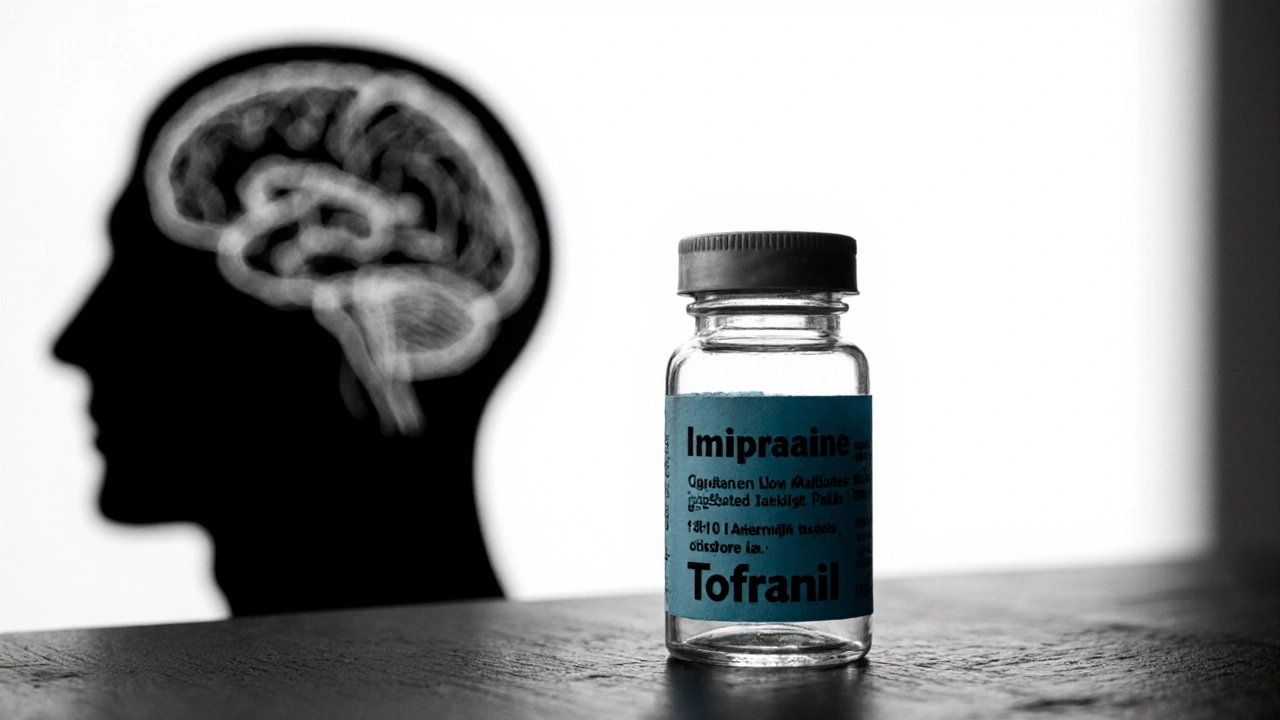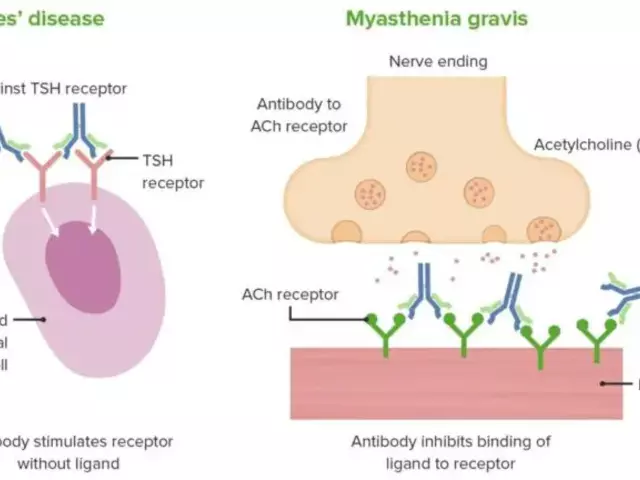Antidepressant Suitability Calculator
Select your key medical factors and side effect concerns. The calculator will show which antidepressants may be most suitable for your situation based on clinical evidence from the article.
Based on your profile, these antidepressants may be suitable:
Why these options?
When you or a loved one need a mood‑lifting pill, the choices can feel overwhelming. One name that still shows up on prescriptions is Tofranil. But how does it really stack up against newer or more widely used options? This guide breaks down the science, side‑effects, dosing quirks, and practical tips so you can see whether Tofranil or another drug fits your situation best.
What is Tofranil (Imipramine)?
Tofranil (generic name Imipramine) is a tricyclic antidepressant (TCA) that has been on the market since the late 1950s. It was originally approved for major depressive disorder but later earned a reputation for treating nocturnal enuresis in children and certain anxiety disorders.
Imipramine belongs to the TCA class, which works by blocking the reuptake of serotonin and norepinephrine, two neurotransmitters that influence mood and pain perception. By keeping these chemicals in the synaptic gap longer, the drug helps lift low mood and ease anxiety.
How Tofranil Works in the Brain
The TCA mechanism is a double‑edged sword. Imipramine blocks the serotonin transporter (SERT) and the norepinephrine transporter (NET), boosting both neurotransmitters. This dual action is why TCAs can be effective when newer agents fall short, especially in patients with severe melancholic depression.
However, the same broad receptor activity also means the drug can latch onto histamine, muscarinic, and alpha‑adrenergic receptors, leading to classic side effects like dry mouth, dizziness, and low blood pressure. Understanding this pharmacology is key when you compare it to more selective drugs.
Key Alternatives Overview
Below are the most common alternatives that doctors consider when they think Tofranil might not be the best fit. Each has a distinct pharmacological profile, dosing range, and side‑effect fingerprint.
- Amitriptyline - another TCA, slightly more sedating, often used for chronic pain and migraine prophylaxis.
- Sertraline - a selective serotonin reuptake inhibitor (SSRI) that pioneered a generation of safer antidepressants.
- Venlafaxine - a serotonin‑norepinephrine reuptake inhibitor (SNRI) that sits between SSRIs and TCAs in potency.
- Bupropion - a norepinephrine‑dopamine reuptake inhibitor (NDRI) favored for patients who want to avoid sexual side effects.
- Mirtazapine - a tetracyclic agent with strong antihistamine effects, useful for patients with insomnia or appetite loss.
Side‑Effect Profile Comparison
Side effects often decide which drug someone can tolerate long‑term. Below is a side‑by‑side look at the most clinically relevant adverse events for each medication.
| Drug | Drug Class | Typical Dose Range | Onset of Action | Common Side Effects | Key Drug Interactions |
|---|---|---|---|---|---|
| Tofranil (Imipramine) | Tricyclic Antidepressant | 75‑300mg/day | 2‑4weeks | Dry mouth, constipation, orthostatic hypotension, weight gain, sexual dysfunction | MAO‑inhibitors (risk of serotonin syndrome), CYP2D6 inhibitors |
| Amitriptyline | Tricyclic Antidepressant | 25‑150mg/day | 2‑4weeks | Sedation, weight gain, cardiac conduction delays | MAO‑inhibitors, anticholinergics |
| Sertraline | SSRI | 50‑200mg/day | 1‑2weeks | Nausea, insomnia, sexual dysfunction, GI upset | Other serotonergic agents, CYP2C19 inhibitors |
| Venlafaxine | SNRI | 75‑375mg/day | 1‑2weeks | Increased blood pressure, nausea, sweating, sexual dysfunction | MAO‑inhibitors, CYP2D6 inhibitors |
| Bupropion | NDRI | 150‑450mg/day | 1‑2weeks | Insomnia, dry mouth, seizures at high doses | Monoamine oxidase inhibitors, CYP2B6 inhibitors |
| Mirtazapine | Tetracyclic Antidepressant | 15‑45mg/day | 2‑4weeks | Weight gain, sedation, increased appetite | Other CNS depressants, CYP3A4 inhibitors |
Notice how Tofranil’s anticholinergic side effects (dry mouth, constipation) line up with the older TCAs, while newer agents like Sertraline lean toward gastrointestinal upset and sexual issues. If you’re sensitive to any of these clusters, that can point you toward the right drug.
Choosing the Right Option: Decision Guide
Picking a medication isn’t just about the list of side effects. Consider these practical dimensions:
- Medical History: Heart disease, glaucoma, or a history of seizures dramatically shifts risk. TCAs such as Tofranil can prolong the QT interval, so cardiology input is essential for patients with arrhythmias.
- Age and Metabolism: Older adults process TCAs slower, often leading to higher plasma levels and toxicity. In that group, an SSRI like Sertraline is usually safer.
- Drug‑Interaction Landscape: Review every current prescription. If a patient takes a CYP2D6 inhibitor (e.g., fluoxetine), Tofranil’s levels could spike, causing dizziness and confusion.
- Desired Speed of Relief: If you need a rapid onset-for example, severe anxiety before a major life event-an SNRI like Venlafaxine might work faster than a TCA.
- Side‑Effect Tolerance: Some patients value weight gain and sedation (useful for insomnia) and will accept Amitriptyline; others cannot tolerate those effects and prefer Bupropion’s more neutral profile.
By crossing your personal or patient profile with the matrix above, you can narrow down the shortlist to one or two candidates, then let a clinician handle the final choice.

Practical Tips for Starting or Switching
- Begin at the lowest effective dose-most doctors start Tofranil at 25mg at bedtime to minimize orthostatic symptoms.
- Monitor blood pressure and heart rate weekly for the first month if you’re on a TCA.
- Never combine a TCA with an MAO‑inhibitor; a wash‑out period of at least 14 days is mandatory.
- If you switch to an SSRI or SNRI, taper the TCA slowly over 2‑3 weeks to avoid withdrawal and serotonin syndrome.
- Keep a side‑effect diary: note sleep quality, appetite changes, and any new sensations. This data helps your prescriber fine‑tune the regimen.
Frequently Asked Questions
Frequently Asked Questions
Can I take Tofranil for anxiety?
Yes, many clinicians prescribe Imipramine off‑label for generalized anxiety disorder, especially when patients haven’t responded to SSRIs. Its dual serotonin‑norepinephrine boost can calm worry, but the anticholinergic side effects may limit use.
How long does it take for Tofranil to start working?
Most people notice mood improvement after 2‑4 weeks of consistent dosing. Full therapeutic effect can take up to 8 weeks, so patience and regular follow‑up are key.
Is Tofranil safe during pregnancy?
The drug is classified as Pregnancy Category C, meaning risk cannot be ruled out. Discuss alternatives with your obstetrician; many prefer SSRIs with better safety data.
What should I do if I miss a dose?
Take the missed tablet as soon as you remember, unless it’s close to the next scheduled dose. In that case, skip the missed one-don’t double‑dose.
Can Tofranil cause weight gain?
Weight gain is a common side effect of TCAs, including Imipramine, due to increased appetite and metabolic changes. If weight is a concern, discuss alternatives like Bupropion, which is weight‑neutral or even slightly weight‑lossing.





Elle McNair
October 16, 2025 AT 12:38Tofranil can work but it’s not the only option
Dennis Owiti
October 24, 2025 AT 22:14I totally get the struggle when picking an antidepressant
TCAs feel old school but they still help a lot of people
Just make sure you talk to your doc about side effects and dosage
Justin Durden
November 2, 2025 AT 06:50Hey there, I think it’s cool that you’re looking at the full picture
Sometimes the older meds like Imipramine are overlooked but they can be a solid backup
Just take it slow, watch for dry mouth and watch your blood pressure
We all need a plan B in case SSRIs don’t click
Michael Christian
November 10, 2025 AT 16:26Imipramine works but it has a lot of side effects like dry mouth and low blood pressure
If you can handle that it might be worth a try
Otherwise newer SSRIs are easier on the body
Steven Elliott
November 19, 2025 AT 02:02Oh great, another TCA.
Lawrence D. Law
November 27, 2025 AT 11:38From a pharmacological standpoint, Imipramine (Tofranil) remains a viable therapeutic agent; however, clinicians must meticulously assess the patient’s cardiovascular profile, given the drug’s propensity to induce orthostatic hypotension and QT‑interval prolongation. Moreover, the anticholinergic burden-manifested as xerostomia, constipation, and potential cognitive fog-necessitates a judicious risk‑benefit analysis, especially in geriatric populations. In contrast, selective serotonin reuptake inhibitors demonstrate a markedly favorable adverse‑event spectrum, albeit with their own considerations such as sexual dysfunction and serotonergic syndrome when combined with other serotonergic agents. Ultimately, individualized patient factors should dictate the selection of an antidepressant regimen.
Mary K
December 5, 2025 AT 21:14Whoa, that was a mouthful, but you nailed the key points!
Think of it like picking a tool from a toolbox-if you need a gentle touch, maybe go with an SSRI, but if the job is stubborn, a TCA can be the hammer that gets it done.
Just remember, every medication comes with its own flavor of side‑effects; it’s all about matching the flavor to the person’s taste buds.
And hey, if you’re worried about those dry‑mouth vibes, sip water, chew gum, or keep a lollipop handy.
Bottom line: talk to your doc, track how you feel, and don’t be afraid to switch if the first pick feels off.
Brennan Keeler
December 14, 2025 AT 06:50Look, the science is clear: TCAs are older but still effective; however, you must respect the cardiac risks and the anticholinergic load, especially in our population that values resilience and productivity. If you’re chasing performance, you need a med that won’t make you feel like a zombie. That’s why many of us steer toward agents with a cleaner side‑effect profile.